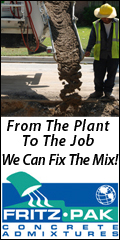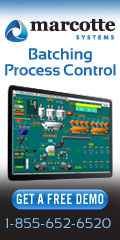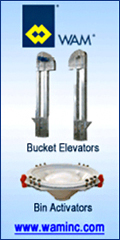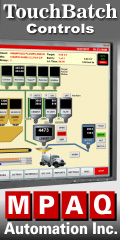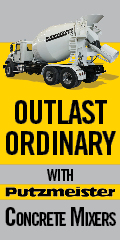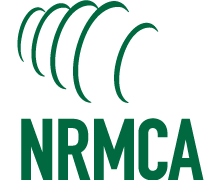
| Archive | nrmca.org | E-Store | Conferences & Events | Certifications | InFocus |
NRMCA Attends ASTM Committee Meetings The following is a summary of actions at the ASTM meeting of Committees C01 on Cement and C09 on Concrete attended by NRMCA staff earlier this month in Atlanta.
C09.20 Concrete Aggregates - There was no activity on revisions to ASTM C33. Revisions were in process for C88 on soundness. Revisions were approved to C70 (moisture by displacement), C117 (passing No. 200) and C566 (moisture content of aggregate by drying) to change these standards to SI unit standards. A task group working on a specification for mineral fillers for use in concrete developed and balloted an initial proposal. Feedback from the ballot will be considered for a future ballot. This specification will support the use of mineral fillers in concrete, which may be used in self-consolidating concrete or for other purposes. A new rapid (5 minute) test method to determine the methylene blue index (MBI) of aggregate was approved at the subcommittee level and will be issued for a main committee ballot. The test is a colorimetric method and is considered to simpler, more accurate and less subjective than an existing AASHTO method. The purpose of the test is to identify the presence of active clay minerals in aggregates or in mineral fillers.
C09.24 Supplementary Cementitious Materials - The proposed revision to C618 that requires the reporting of calcium oxide (CaO) content and total alkali content of fly ash has passed the main committee and will become part of the standard by early 2013. Various terminology such as water soluble alkali, total alkali (acid soluble vs XRF) and available alkali will be discussed as new business in ASTM C311. The subcommittee discussed evolving legislative activity regarding the EPA proposal to address fly ash proposal and beneficial use.
C09.26 Chemical Reactions - The precision statement of the concrete prism test, ASTM C1293 for determining the reactivity of aggregates will be updated. The subcommittee is evaluating the accuracy to which the result has to be reported (to the nearest 0.001% or to 0.01%) relative to the typical acceptance criteria of 0.04%. It was pointed out once the reactivity of an aggregate source is established by ASTM C1260 or more preferably the more reliable ASTM C1293, ASTM C289 (chemical method) can be used as a rapid method for monitoring the reactivity of that aggregate source. New business items planned include: 1. Introduction of "as is" aggregate grading option in C1260, C1293 and C1567 tests; 2. Inclusion of C595 and C1157 cements in C1293 and C1567.
C09.40 Ready Mixed Concrete - Two significant revisions to ASTM C94 were approved: 1. a provision will permit the addition of water to concrete during transportation (with limits) in truck mixers to permit the use of equipment available and being developed that evaluates the slump of concrete and facilitates the automated and recorded addition of water to achieve target slump; 2. A new section that defines the process and requirements for verification of the accuracy of scales used for batching concrete. This revision is consistent with the process described in the NRMCA plant certification program.
A proposed revision to eliminate the 300 revolution limit on truck mixed concrete was successful in passing the subcommittee resolution process, but was held back from being approved by the C09 main committee. The comments from the previous ballot have been accommodated and the revision will be proposed for a new letter ballot. A revision was proposed to the section that deals with dispute resolution to remove the requirement to use arbitration for this purpose. The subcommittee resolved all negatives and the item will seek approval by the main committee in a future ballot.
Items in line for future revisions include changes to the air content table, several revisions to the section on batching concrete, clarifying requirements for ordering lightweight concrete, addressing reuse of fresh returned concrete more likely as a separate standard and revisions to the methods used for chemical analysis of non-potable mixing water.
C09.48 Performance of Cementitious Materials and Admixture Combinations - Based on a previous ballot, this subcommittee will revise and reballot a new practice for evaluating hydration of hydraulic cementitious mixtures using thermal measurements. The practice will provide information on using simple thermal measurements with concrete, mortar or paste specimens to evaluate early age hydration of materials combinations of cements, pozzolans, slags and chemical admixtures, with or without aggregates. This practice will be useful in determining the effects of varying combinations of materials, at specific temperatures of interest, on performance aspects such as time of set, early hydration rates and identification of abnormal hydration tendencies.
C09.49 Pervious Concrete - Four ASTM methods on pervious concrete have been standardized thus far – ASTM C1688 on Fresh Density, C1701 on Field Infiltration Rate, C1747 on Resistance to Impact and Abrasion and C1754 Hardened Density and Void Content. Several new items were discussed on all of the above methods. C1688 has undergone a number of revisions already since it was first standardized in 2008. The other two new methods that are being pursued are compressive strength and flexural strength with a final round robin and a ballot of the compressive strength test method being planned for Spring 2013.
NRMCA Vice President Karthik Obla will step down as chairman after completing his six-year term which started at the inception of this subcommittee; Matt Offenberg will take over as the new chair.
C09.50 Risk Management for Alkali Aggregate Reactions (AAR) - The new practice "Determining Reactivity of Concrete Aggregates and Minimizing Risk of Deleterious Expansion" has been balloted thrice and the latest round has received nine negatives that will result in improvements to the standard. The item was withdrawn to address these comments and will be reballoted.
C09.60 Fresh Concrete Tests - A revision was approved to the slump test method, C143, to permit the use of ABS plastic for slump cones without qualification testing. Minor revisions were approved for the air content by the volumetric method, C173. The subcommittee continues to develop a precision statement for the air content by the pressure method, C231, but there was some concern on the proposed statement based on the data from the inter-laboratory study.
Regarding the measurement of water content of fresh concrete using the microwave oven, it was indicated that the AASHTO Subcommittee on Materials would vote to drop the method and ASTM will not continue to develop its version of the method. If AASHTO does not drop the method, revisions will be proposed to the AASHTO Standard T318. The subcommittee received a presentation by Dr. Ley from the Oklahoma State University on a modified air content pressure meter test that provides an indication of the air void distribution in addition to the total air content. Dr. Ley’s research indicates that air voids tend to be of coarser size in fresh concrete containing carboxylate water reducing admixtures.
C09.61 Strength - Minor revisions were approved to C78 and C293 on testing for flexural strength and some clarification items to C617 and C1231 on capping cylinders. A new standard was approved for accelerated curing of concrete based on a portion C684 which will be replaced by this standard. Accelerating curing procedures using warm water and autogenous methods are described in this practice.
C09.66 Fluid Penetration - There are many different resistivity (bulk and surface) test methods. Under ideal conditions their results should match but they seem to differ and this was discussed. The 4 point resistivity method, referred to as the Wenner probe method, was discussed. There are at least three commercial equipment manufacturers producing devices. The devices use gels and wet sponges in contact with the concrete and the actual resistivity may be influenced by that.
C09.67 Resistance to Environment - A new version of the ASTM C672 - Scaling Test was discussed. Changes to the current version include: 1. Accelerated curing of specimens; 2. Presoaking for 7 days in sodium chloride solution followed by cycles of freezing and thawing ponded with sodium chloride solution, instead of the current calcium chloride. These changes make the test method less severe and the results correlated better with field exposure in a Canadian research project.
C01.10 Cement - A minor revision was approved to ASTM C595 on blended cement. Work is underway to reorganize C595 to improve clarity – define materials used in manufacture, simplify the table of requirements and some of the nomenclature used for blended cements. Activity is also underway to establish heat of hydration requirements for cements based on newly standardized method ASTM C1702 by isothermal calorimetry.
Units - Negative votes on ballots requested the use of U.S. Customary (in-lb) units in standards. ASTM Committee C09 policy is to develop standards in SI (metric) units or in dual units, with SI and U.S. units stated separately. The units should not be mixed when a standard is used. It is the option of subcommittees on whether to develop SI only or dual unit standards depending on the potential users of the standard. Only a small number of standards under Committee C09 do not currently comply with the policy.
Workshop - A workshop was offered on Thermal Methods for Prediction of Properties of Cementitious Systems. Several presentations discussed how thermal measurements on cement pastes, mortars or concrete can help predict early age properties such as setting time, strength and other properties and the practical adoption of these methods. Some of the presentations were limited to isothermal calorimetry for heat of hydration of cement and optimizing sulfate content of cementitious systems. One type of device measured thermal profile of the same cementitious system at different temperatures and could be useful in developing information for maturity relationship with strength development.
For more information, contact NRMCA's Colin Lobo or Karthik Obla.
|
|
|
